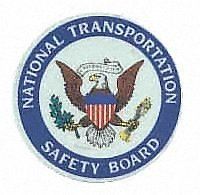 Minor
Judson "Buddy" Ward, 63, was killed on Valentine's Day five years
ago, when he flew his Cherokee 180 into a citrus grove in Florida.
Adding to the tragedy is that the recovered engine was stolen from
an impound yard less than two weeks after the wreck.
Minor
Judson "Buddy" Ward, 63, was killed on Valentine's Day five years
ago, when he flew his Cherokee 180 into a citrus grove in Florida.
Adding to the tragedy is that the recovered engine was stolen from
an impound yard less than two weeks after the wreck.
Mr. Ward's widow, Faye, who is still convinced, reports say,
that her husband must have had something go wrong, sued the yard
operator, Kauff's Transportation Systems. Three days into the trial
that started Monday, and dramatically, just after Mrs Ward took the
witness stand, Kauff's agreed to pay $700,000 for losing the
engine, and to accept no more liability of any kind. That
case is over.
 Now, a busted-up Cherokee's engine isn't worth
anywhere near $700,000; but the settlement should help Mrs Ward at
least ease some of her angst. As evidence, assuming something was
actually wrong with the engine, it could theoretically have been
worth millions.
Now, a busted-up Cherokee's engine isn't worth
anywhere near $700,000; but the settlement should help Mrs Ward at
least ease some of her angst. As evidence, assuming something was
actually wrong with the engine, it could theoretically have been
worth millions.
The NTSB thinks it knows why "Buddy" Ward, former Cox Newspapers
vice president, crashed.
The NTSB report shows that the airplane was on its first flight
since its annual, and that Mr Ward was VFR-rated and on a special
medical, which was current. Not all the maintenance and inspections
were up to Space Shuttle standards, however. The report says, "The
engine had accumulated 3,230 total flight hours with 1,081 flight
hours since major overhaul, which was on February 6, 1980. On May
21, 1978, the last altimeter and static system checks were
performed. The transponder was last tested on January 21, 1985."
The aircraft, though, did not seem to have been having troubles,
according to what the NTSB saw. Ward had filled the tanks, too,
with what proved to be clean gas.
According to the NTSB report, Ward hadn't logged a BFR since
1991.
 More can be learned from the final report: "The
pilot did not obtain a weather briefing from FAA Flight Service or
a DUAT's vendor. The pilot was observed to go into the weather room
at the airport where commercial computer weather services was
available. Departure was delayed due to low ceilings and
visibility. After departure the aircraft was observed flying low in
fog, collide with powerlines, and crash. Postcrash examination of
the aircraft structure, flight controls, engine, and propeller
showed no evidence of precrash failure or malfunction."
More can be learned from the final report: "The
pilot did not obtain a weather briefing from FAA Flight Service or
a DUAT's vendor. The pilot was observed to go into the weather room
at the airport where commercial computer weather services was
available. Departure was delayed due to low ceilings and
visibility. After departure the aircraft was observed flying low in
fog, collide with powerlines, and crash. Postcrash examination of
the aircraft structure, flight controls, engine, and propeller
showed no evidence of precrash failure or malfunction."
Though departure WX was fine, the NTSB continued, "A sheriff's
department helicopter pilot flew to the scene from the St. Lucie
County Airport, shortly after the accident. He stated the tops of
the electrical transmission towers at the crash site were obscured
by the low clouds and fog, the cloud ceiling was about 100 feet
above the ground, and visibility was about 1/4 to 1/2 mile."
"The National Transportation Safety Board determines the
probable cause(s) of this accident as follows:
"The pilot's continued visual flight rules into instrument
flight rules conditions and his failure to maintain altitude after
encountering instrument flight rules conditions resulting in the
aircraft colliding with powerlines and crashing. A factor in the
accident was the pilot's failure to obtain a full weather briefing
prior to departure."
 Classic Aero-TV: In Praise of Alabamas Patriot Aircraft USA
Classic Aero-TV: In Praise of Alabamas Patriot Aircraft USA NTSB Final Report: Cirrus Design Corp SR22
NTSB Final Report: Cirrus Design Corp SR22 ANN's Daily Aero-Term (12.21.25): Dead Reckoning
ANN's Daily Aero-Term (12.21.25): Dead Reckoning ANN's Daily Aero-Linx (12.21.25)
ANN's Daily Aero-Linx (12.21.25) Aero-News: Quote of the Day (12.21.25)
Aero-News: Quote of the Day (12.21.25)





